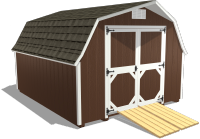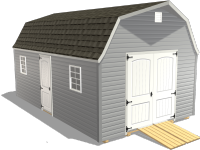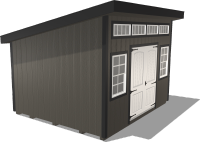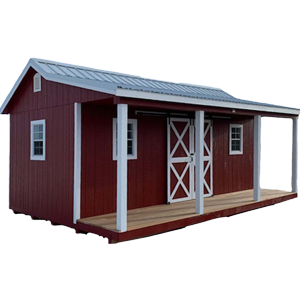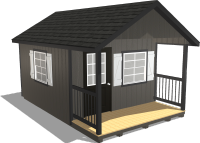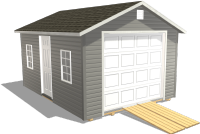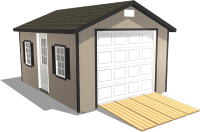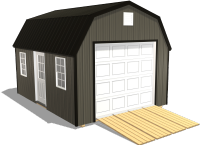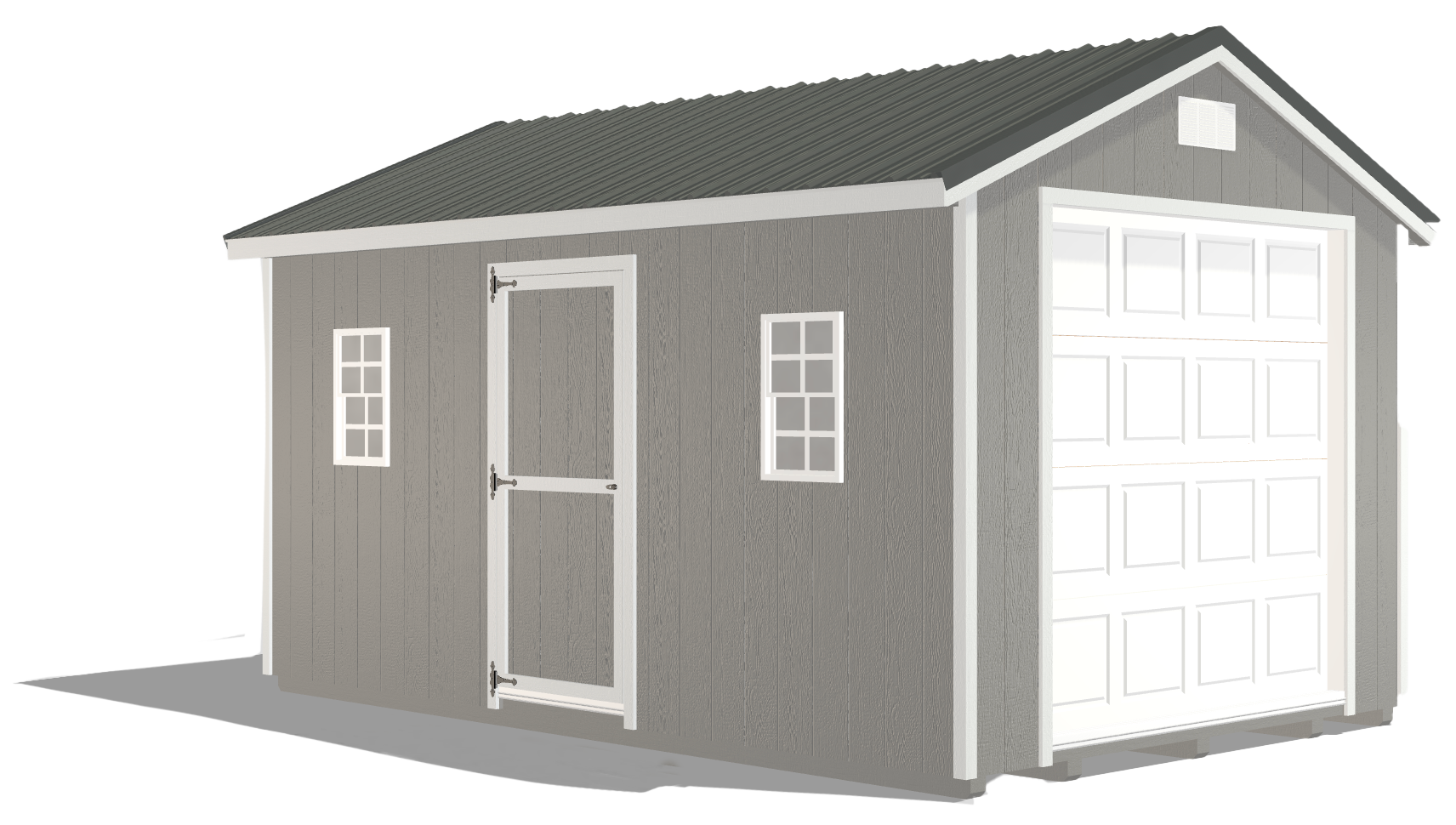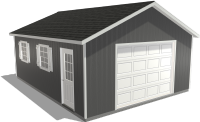Gardening With a Greenhouse: Proven Techniques for Healthy, Productive Plants
by Dakota Storage Buildings, on January 17, 2025

Gardening with a greenhouse offers the unique advantage of year-round plant growth, giving gardeners control over their growing environment to yield healthier, more productive plants. However, managing a greenhouse also comes with a few challenges. Space constraints, pest management, climate control, and common plant health issues are some of the hurdles greenhouse gardeners often face. Here, we want to provide essential strategies and solutions to help you optimize your greenhouse and tackle common problems, from vertical gardening to smart watering and pest control.
Space-Saving Vertical Solutions for Your Greenhouse
Problem: Limited space can restrict plant variety and productivity in a greenhouse.
Solution: Maximize your growing area with vertical gardening techniques.

Greenhouses have finite floor space, so using vertical gardening is a great way to increase plant yield without overcrowding. Vertical gardening systems — such as trellises, shelving, and hanging planters — allow you to grow more plants in the same footprint by utilizing the full height of your greenhouse. Vertical gardening also improves airflow between plants, helps prevent mold and mildew, and makes maintenance easier since plants are more accessible.
- Trellises work well for climbing plants like tomatoes, cucumbers, and beans.
- Shelving units are ideal for seedlings and smaller plants.
- Hanging planters are perfect for herbs and trailing plants.
To prevent any accidents, ensure your shelving and trellises are securely attached to the greenhouse. You should also regularly check that climbing plants are properly supported as they grow.
Learn more about how to utilize vertical gardening solutions.
Mastering Pest Control in a Greenhouse Environment
Problem: Pests can thrive and spread quickly in a greenhouse environment.
Solution: Use preventive and targeted greenhouse pest control methods to protect your plants.

Greenhouses provide a warm, controlled environment that can attract pests like aphids, whiteflies, and spider mites. While keeping pests out completely can seem impossible, effective monitoring and control strategies can help prevent infestations.
- Aphids are small and can weaken plants by sucking their sap.
- Whiteflies are visible around plants when disturbed.
- Spider mites leave fine webs on foliage.
To keep your greenhouse clean and pest-free, remove dead leaves and debris that attract pests. Introduce beneficial insects, such as ladybugs or predatory mites, which naturally reduce pest populations. You should also regularly inspect plants for signs of pests, and set up sticky traps to monitor flying insects. If you need to directly target pests, consider organic insecticides or insecticidal soaps as a safe option for managing pest populations without harming plants.
Discover how to identify, prevent, and manage pest infestations.
Watering Your Greenhouse Plants Efficiently
Problem: Inefficient watering can lead to overwatering, underwatering, or wasted water.
Solution: Install an effective greenhouse watering system to keep your plants hydrated and healthy.

Greenhouses generally need consistent moisture, but too much water can cause root rot, and too little can stress plants. Selecting the right greenhouse watering system is crucial to maintaining balanced hydration for optimal plant health.
- Drip irrigation provides slow, controlled watering directly to plant roots, which conserves water and prevents excess moisture on leaves.
- Misting systems are great for increasing humidity and keeping soil consistently moist.
- Sprinkler systems, while effective, should be used carefully to avoid water waste.
To keep greenhouse watering systems working properly, you must conduct routine maintenance. Keep watering systems clean and check for clogs to ensure water is being distributed evenly. You may also need to adjust your watering schedule based on seasonal needs. For example, some plants may require less water in cooler months and more in warmer months.
Explore smart watering solutions for thriving plants.
Balancing Temperature and Humidity for the Perfect Climate
Problem: Temperature and humidity fluctuations can stress plants and encourage mold growth.
Solution: Optomize heating, cooling, and ventilation to maintain an ideal greenhouse environment.

Controlling climate is one of the biggest advantages of greenhouse gardening, but you must monitor it to avoid temperature spikes or drops. When temperature changes suddenly, it can harm plants. Additionally, high greenhouse humidity without proper airflow can lead to mold and mildew issues.
- Most greenhouse plants thrive between 65°F and 75°F during the day and about 55°F at night.
- Greenhouse humidity should generally be kept between 50-70%, depending on the type of plant.
In cooler months, electric heaters or solar heating can keep temperatures stable. However, in warmer months, you can use fans to circulate air and prevent stagnant conditions that encourage mold. Open vents or installing shade cloths are another way to prevent overheating in the summer.
Read more tips on managing greenhouse temperature effectively.
Troubleshooting Common Greenhouse Problems
Problem: Mold, nutrient deficiencies, and drainage issues can impact plant growth and yield.
Solution: Identify these issues early and implement targeted solutions.

Gardening with a greenhouse has its unique challenges, and common issues can significantly affect your plants if not managed properly. Here is how you can address some of the most frequent problems:
- Mold and Mildew: Mold can appear as white or gray spots on leaves and soil, often due to poor air circulation or high humidity. Combat this by increasing ventilation, spacing plants to improve airflow, and using organic fungicides if needed.
- Nutrient Deficiencies: Plants in greenhouses may suffer from deficiencies in nitrogen, phosphorus, or potassium, which manifest as stunted growth or yellowing leaves. A soil test kit can help you identify nutrient imbalances. Use balanced fertilizers or add compost to replenish nutrient levels.
- Waterlogging and Drainage: Overwatering or poor soil drainage can lead to waterlogged roots, which cause root rot. To improve drainage, use well-draining soil mixes, install raised beds, or add gravel to your pots to prevent excess water retention.
Go deeper into how you can manage each of these challenges.
Optimize Your Greenhouse for Year-Round Growth and Productivity
Gardening with a greenhouse lets you cultivate plants year-round, but it also requires careful management to maintain optimal conditions. By using strategies like vertical gardening, pest control, efficient watering, and climate regulation, you can keep your greenhouse plants thriving. Whether you are a beginner or a seasoned gardener, these tips will help you overcome the challenges of greenhouse gardening and enjoy healthier, more productive plants. Ready to elevate your greenhouse experience? Explore Dakota’s prebuilt greenhouses for a durable, customizable foundation tailored to meet your gardening needs.





